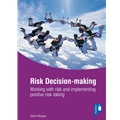Jointly written by Practice Based Evidence & ARW, this resource is of importance to everyone in mental health, social care and learning disability services, including primary care.
Implementing Principles of Best Practice
Flexible Approaches to using the Tools
- Each of the tools are designed to be used as stand-alone guides; select the one appropriate to the area of practice you wish to focus on
- The individual items that contribute to the overall picture on each of the Practice Based Evidence tools are designed to reflect main messages contributing to best practice
- The items across these tools can be applied to prompting, guiding, implementing and reviewing practice in different ways:
- Self evaluation: the best individual practitioners are constantly engaged in reflecting on their own practice and performance
- Individual reflective practice supervision: for identifying areas of individual practice for reflective discussion in supervision sessions
- Structured interviews: providing a basis for interviewing individual staff members or small groups for personal reflection on practice with the purpose of identifying practice development priorities
- Team evaluation and reflection: for reflecting each individual team member’s views on current team performance… combining these different evaluations/reflections can contribute to providing an overall snapshot of where the team is at against these items of best practice currently
- Team practice development: team evaluations/reflections may be used as a collective means of identifying areas for priority for team development; repeating the process at periodic intervals can offer feedback on achievement of practice development initiatives
- There is no single way of using these tools for reviewing practice; but in relation to each item, ask yourself: what is happening now, is it changing (for better or worse), how can I/we illustrate the item in practice, what needs to or can change (for the better)?
Developing the practice based evidence
- The 1-5 scales represent a personal rating as to where they feel their own, or the teams, practice currently is… it represents the level of agreement/disagreement against each positive statement of practice (where 5 is the equivalent of excellent and 1 is poor)
- These ratings will only provide numerical feedback, which offers easy comparative snapshots of different items, or of rated items across time
- The blank boxes following each list offers the potential for additional qualitative information and feedback; they can be used to briefly summarise examples/illustrations/explanations that underpin the current evaluation; they may also be used to identify changes to practice that could be made (N.B. not all boxes need to be completed in each evaluation, only those where you want to provide explanation)
- If using any of the tools for team reflection and practice development evidence can be generated simply but in a few different ways (see www.practicebasedevidence.com for examples in real practice):
- Combining the number of evaluations across a team to produce mean scores for each item… comparison and summaries of the relative ratings and rankings of the items may offer evidence for deciding on development priorities
- Summarising the distribution of ratings across a team to identify the consistency of evaluation about specific aspects of practice
- Feedback on change/progress by comparing evaluations across time, where specific items have received practice development priority and attention
- Summarising qualitative comments can add a depth to the evaluation… analysis of these has to happen within the context of specific individual/team practice (i.e. there are no golden rules)
The range of tools
Selection of tools to use is dependent on the type of team or service you are reviewing/developing/evaluating, or the area of practice you are focusing on (i.e. not all of the tools will be relevant to all individuals/teams). All of the tools emerge from the work of the Practice Based Evidence Consultancy from 2001 onwards.
- Working with Risk… 14 items designed to capture the main messages within the UK Department of Health document Best Practice in Managing Risk (2007)
- Developing a Strengths Approach… 13 items emerging from work conducted in mental health services in the US from the early 1980’s, introduced to UK services in 1991; also reflecting messages from the Gallup Organisation’s extensive research into strengths in organisations from the 1970’s onwards
- Positive Risk-Taking… 13 items emerge out of the exclusive work conducted by the Practice Based Evidence Consultancy in developing this specific area of practice in teams/services since 2001
- Crisis Resolution & Home Treatment… 14 items emerging as a response to CRHT international research and UK Department of Health National Service Framework/Policy Implementation Guide (1999/2002)
- Community Mental Health Teams… 15 items emerging as a response to the UK Department of Health Policy Implementation Guide (2002)
- Assertive Outreach… 13 items emerging as a response to the international research and UK Department of Health National Service Framework/Policy Implementation Guide (1999/2001); with a published review of a seven teams practice development initiative (2007, see www.practicebasedevidence.com for link to the article)
- Person-Centred Practice… 13 items emerging as a response to the UK Department of Health initiatives supporting the implementation of Personalisation/Self-Directed Support (2007) and the refocusing of the Care Programme Approach (2008)





